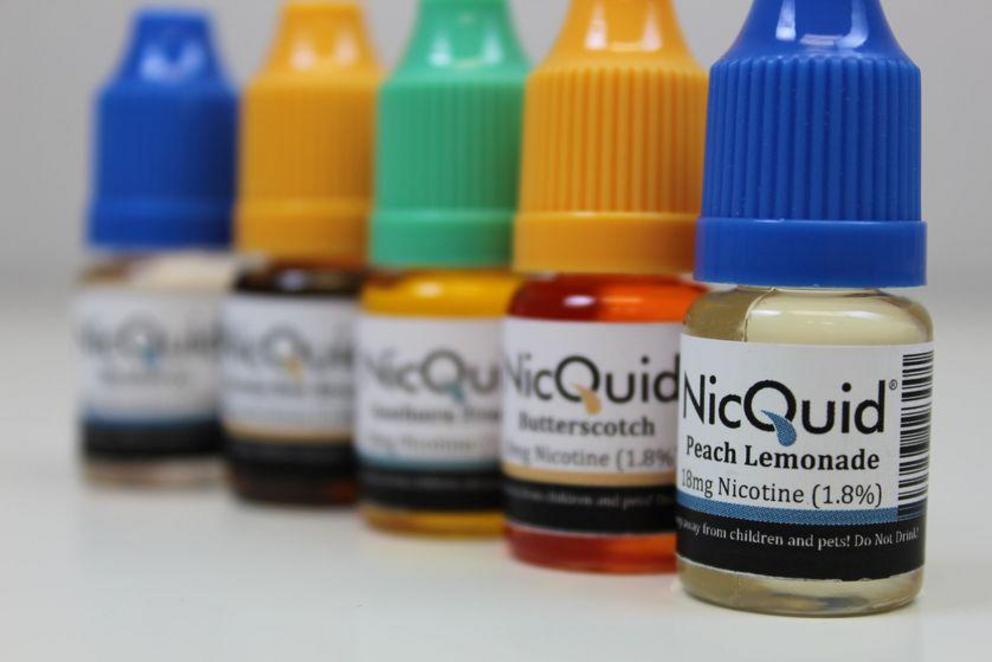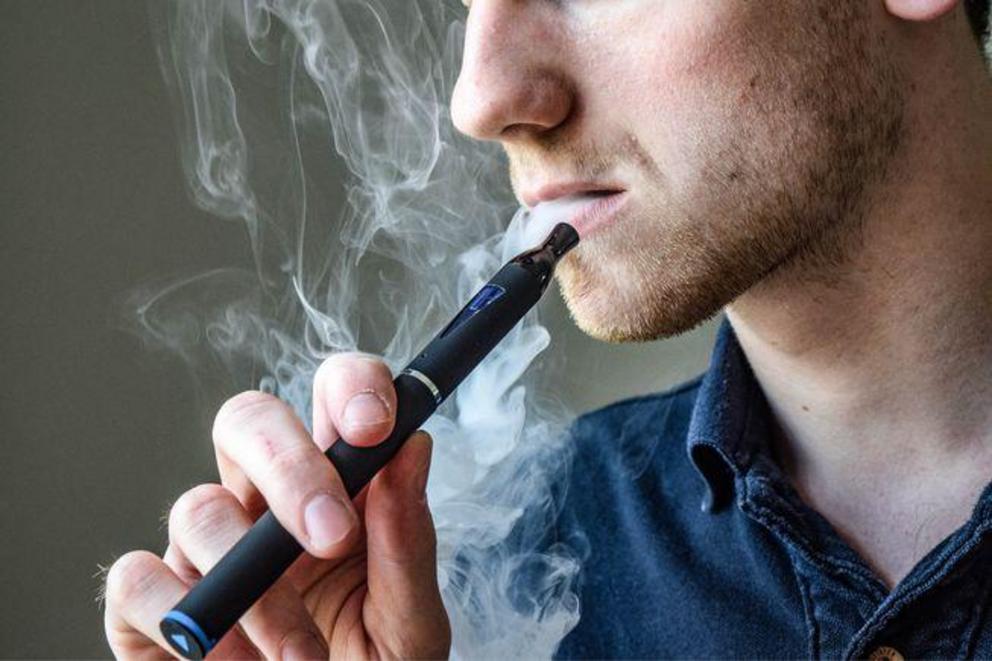What we know about vaping-related lung illness
Health officials have identified a 'very strong culprit.'
The majority of those becoming sick with vaping-related illnesses are young men.
Federal health officials think they know what's causing a mysterious vaping-related lung illness that has sickened more than 2,200 people and caused dozens of deaths.
Vitamin E acetate, an additive sometimes used in THC and other vaping products, may be the reason for the devastating illness, the Centers for Disease Control and Prevention (CDC) said.
At a news briefing in early November, Dr. Anne Schuchat, principal deputy director of the CDC, identified vitamin E acetate as a "very strong culprit." The report was based on fluid samples taken from the lungs of 29 patients with the disease, CNN reports. However, the agency says there still could be other reasons for the illness.
"This does not rule out other possible ingredients," Schuchat said. "There may be more than one cause."
The CDC and the Food and Drug Administration (FDA) have been investigating a "cluster" of severe lung illnesses that the agencies believe are linked to e-cigarette use. As of Dec. 19, 2,506 hospitalized cases have been reported to the CDC in all 50 states, the District of Columbia and the U.S. Virgin Islands. At least 54 people have now died from the illness.
They've also given it a name, though not one that rolls off the tongue: EVALI, which stands for e-cigarette, or vaping, product use associated lung injury.
More than half of the people who have become sick are under the age of 25, with 16% younger than 18. More than three-fourths of the patients are male.
The agencies have been investigating the exact cause and whether the illnesses are linked to specific devices, ingredients or contaminants.
"I'd like to stress how challenging this situation is, as patients may have been exposed to a variety of products and substances, may not know the contents or sources of these products, and in some instances may be reluctant or too ill to fully disclose all the details of interest," CDC Principal Deputy Director Dr. Anne Schuchat said in an earlier call to the media.
Mitch Zeller, director of the FDA's Center for Tobacco Products, said on the call that the agency's office of criminal investigations had started "parallel investigative efforts." The office is investigating details about the products — where they were purchased, and how they were being used — but the agency isn't planning on prosecuting individual e-cigarette users.
The CDC has urged Americans to stop using e-cigarettes during the investigation, especially those containing THC.
"While this investigation is ongoing, people should consider not using e-cigarette products. People who do use e-cigarette products should monitor themselves for symptoms (e.g., cough, shortness of breath, chest pain, nausea, vomiting, abdominal pain, fever) and promptly seek medical attention for any health concerns," said the CDC in a statement.
Vaping history and research
 With flavors like peach lemonade and butterscotch, no wonder so many young people are attracted to vaping.
With flavors like peach lemonade and butterscotch, no wonder so many young people are attracted to vaping.
About 6.2 million U.S. middle and high school students now use of some type of tobacco product in 2019, according to the CDC. That's one in three high school students and about one in eight middle school students. For the sixth year in a row, e-cigarettes are the most commonly used product with 27.5% of high schoolers and 10.5% of middle schoolers choosing to light up electronically.
The products' popularity may be because when e-cigarettes first hit the U.S. in 2007, they were marketed as a safer alternative to traditional cigarettes.
But studies have continued to reveal health concerns with the products. Most recently, a comprehensive analysis of peer-reviewed vaping studies published in the journal BMJ found measurable adverse effects on lung health, similar to traditional cigarettes. "No evidence shows that they are safer than other tobacco products," the researchers wrote.
Lung injuries from vaping are likely caused by toxic chemical fumes, say researchers at the Mayo Clinic, who studied lung biopsies from 17 patients who were believed to have vaping-related lung illness. The findings were published in The New England Journal of Medicine.
“All 17 of our cases show a pattern of injury in the lung that looks like a toxic chemical exposure, a toxic chemical fume exposure, or a chemical burn injury,” Dr. Brandon Larsen, a surgical pathologist at the Mayo Clinic in Scottsdale, Arizona, tells The New York Times. “To be honest, they look like the kind of change you would expect to see in an unfortunate worker in an industrial accident where a big barrel of toxic chemicals spills, and that person is exposed to toxic fumes and there is a chemical burn in the airways.”
Recent research from The Ohio State University suggests that even short-term vaping by people who have never smoked traditional cigarettes causes inflammation at a cellular level that can potentially lead to long-term lung damage.
The laws around vaping
 More communities are passing 'no vaping' laws.
More communities are passing 'no vaping' laws.
In addition to continued research, the rash of illnesses and a rise in young people vaping has prompted several states and the federal government to call for a ban on flavored e-cigarettes. Officials hope that banning the flavors that are appealing to young people will cut back on the use of e-cigarettes.
The Trump administration announced in mid-September that it would ban the sale of most flavored e-cigarettes. The ban was expected to include mint and menthol, which are popular flavors for young people. However, in mid-November, the New York Times reported that the president is retreating from the flavor ban after he was warned about the potential political fallout from voters. "Even a watered-down ban on flavored e-cigarettes that exempted menthol, which was widely expected, appears to have been set aside, for now," the Times wrote.
Meanwhile, leading e-cigarette manufacturer Juul announced earlier in November that it would stop selling its popular mint flavor following the release of new studies in the Journal of the American Medical Association. The research showed that Juul is the most popular e-cigarette brand used by teenagers in the U.S. and mint was the most popular flavor among high school students. After ending mint sales, Juul will only sell menthol and tobacco flavors.
“These results are unacceptable and that is why we must reset the vapor category in the U.S. and earn the trust of society by working cooperatively with regulators, Attorneys General, public health officials, and other stakeholders to combat underage use," Juul CEO K.C. Crosthwaite said in a statement.
Michigan became the first state to ban flavored e-cigarettes in early September. Not long after, New York Gov. Andrew Cuomo announced an emergency executive action to ban the sale of flavored e-cigarettes in the state. A New York court temporarily halted the ban just a day before it was due to take effect, Reuters reports. The state says it will also be cracking down on stores that sell to underage buyers, with the possibility of criminal penalties. In October, Washington state's board of health approved a 120-day temporary ban on flavored vaping products, reports The Seattle Times. A similar temporary ban was approved days earlier in Rhode Island, according to the Providence Journal.
San Francisco became the first city to ban e-cigarette sales after city officials voted in June to ban stores from selling the items and online retailers from delivering to city addresses, according to CNN. Mayor London Breed signed the ordinance a few days later. San Francisco's ban is notable not only for the city's early action but also because it's home to Juul.
America's largest retailer has also taken a stand on vaping. On Sept. 20, Walmart announced it would stop selling e-cigarettes.
"Given the growing federal, state and local regulatory complexity and uncertainty regarding e-cigarettes, we plan to discontinue the sale of electronic nicotine delivery products at all Walmart and Sam's Club US locations," the company said in a statement. "We will complete our exit after selling through current inventory."
What is the FDA's role in this?
 A vaping shop in Queens, a borough of New York City, features a lounge area to vape and sells hundreds of different vaping products.
A vaping shop in Queens, a borough of New York City, features a lounge area to vape and sells hundreds of different vaping products.
The actions highlight what e-cigarette opponents and health advocates say is the FDA's failure to act on the issue, points out CNN. Officials from San Francisco, New York and Chicago criticized the FDA in a March letter for allowing e-cigarettes to remain for sale without undergoing a review on their impact on public health.
"San Francisco has never been afraid to lead and we're certainly not afraid to do so when the health and lives of our children are at stake," City Attorney Dennis Herrera said in that letter. "By law, before a new tobacco product goes to market, the Food and Drug Administration is supposed to conduct a review to evaluate its impact on public health. Inexplicably, the FDA has failed to do its job when it comes to e-cigarettes. Until the FDA does so, San Francisco has to step up."
The FDA banned e-cigarette sales to children under 18 in May 2016, but other regulation has been slippery. According to the FDA, currently e-cigarettes that are marketed for therapeutic purposes (like the cessation of smoking) are regulated by the FDA Center for Drug Evaluation and Research (CDER). The FDA finalized a rule that went into effect in August 2016 that broadens the administration's authority to include e-cigarettes.
The FDA has stated its intent to issue a proposed rule that would extend the agency's authority to products that meet the statutory definition of "tobacco product," which would include e-cigarettes.
"Before this final rule, these products could be sold without any review of their ingredients, how they were made, and their potential dangers," Zeller explained in an earlier statement. "Under this new rule, we're taking steps to protect Americans from the dangers of tobacco products, ensure these tobacco products have health warnings, and restrict sales to minors."
Editor's note: This story has been updated with new information since it was published in September 2019.

